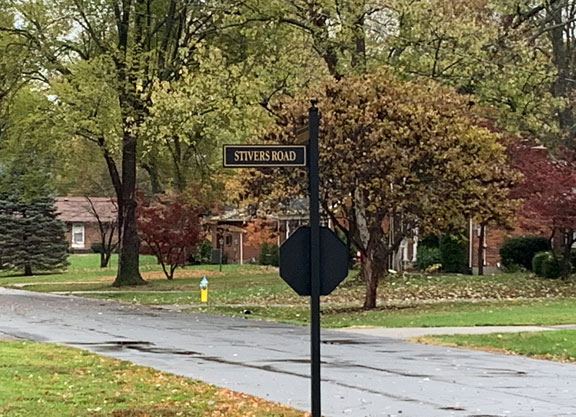By Patrick Gilligan
My son Jack bought a house in Louisville in the spring. A fixer-upper, he was going to live there for the summer with his pal and fellow jockey Rayan Gazader and together they were going to remodel it and hopefully flip it for a profit in the fall.
The guys did a good job, but it was more work than they expected. I have been helping them for the past few weeks, finishing it off. The house itself is in a place called Woodlawn Park. I told Jack, whatever he bought, try and buy in the best area. I thought he did well. The City of Woodlawn Park is a small area east of downtown. A neighborhood of mature trees and young parents with kids on bikes and older people walking their dogs. A safe quiet place that even has their own chief of police. He called in to see us one day when I was there. Mike Koenig is his name, a solid man with a handshake it would be difficult to wriggle away from.
We talked for a while. He already knew Jack was a jockey, and then he told me, that Woodlawn Park, once upon a time, was Woodlawn Racecourse.
Woodlawn Racecourse was formed by the Woodlawn Racing Association in 1858 and held its first race meet in the fall of the following year, 16 years before Churchill Downs would stage its first race.
The initial meets proved a success. The racecourse was popularly considered one of the best to be found anywhere, and the great and the good came to the sports. By 1862, however, the Civil War impacted Woodlawn to such an extent that the proprietor of the famous Woodburn Stud, R.A. Alexander, buried on his land a sporting challenge trophy he had commissioned just two years earlier for safekeeping. After the war, Woodlawn never recovered its initial popularity, and by 1870 it had staged its last race.
The Woodlawn vase, as the buried trophy was known, was thereafter posted by different owners for different races at different tracks. By 1878, it had emigrated east to New Jersey, and from there to Morris Park in New York, until eventually, in 1917, it arrived at Pimlico Racecourse, where it was put up as the trophy awarded to the winner of the second leg of the Triple Crown, the Preakness Stakes.
The trophy was awarded annually to winning connections until 1953. Nowadays, a one third size trophy is awarded to the winning owner, and smaller replicas still to the winning trainer and jockey. It is still made of sterling silver though, and the owner gets to keep it. The replica Woodlawn vase is valued at $40,000
That is why the original trophy is no longer awarded as a challenge trophy as it once was, entrusted to each winning owner for twelve months until the following year's contest. The Woodlawn Vase stands three feet high, it is formed from 30lbs of solid sterling silver. On top of the base of the vase stands a stallion and a mare and foal. Above that is inscribed the rules for competing for the Woodlawn Vase. Above that on the main body of the bowl are four shields, two are blank, of the others one has a representation of a racehorse, the other a representation of Woodlawn Racecourse. Higher up are four figures of victory, a wreath held in their outstretched arms. Above that are portraits of the eight officers of the Woodlawn Racecourse Association. Finally, the whole piece is topped by a sculpture of the famous racehorse and great sire of the day Lexington. The original trophy, when commissioned by R.A. Alexander, cost $1,000. It was a shrewd commission: he engaged Tiffany's to create it.
So, the first prize of the Preakness Stakes wouldn't buy the trophy which represents the race. Justify, who in 2018 won all three legs of the Triple Crown, earned just under $3 million for his efforts. That wouldn't be enough to buy the Woodlawn Vase.
The Woodlawn Vase is in fact estimated to be the second most valuable sporting trophy in the world today, second only to the FIFA (soccer) World Cup trophy. Today the vase is on display at the Baltimore Museum of Art. Each year it is brought to Pimlico in May, on Preakness Stakes day by the Maryland National Guard.
If you get a chance to see it at Pimlico, or at the Baltimore Museum of Art, you should take it. It is a piece of American history, of American art also. And you will get to see what four million dollars looks like.
Patrick Lawrence Gilligan is the father of jockey Jack Gilligan and author of “Around Kentucky With the Bug!” a story of he and Jack's first year in the United States together.
Not a subscriber? Click here to sign up for the daily PDF or alerts.






